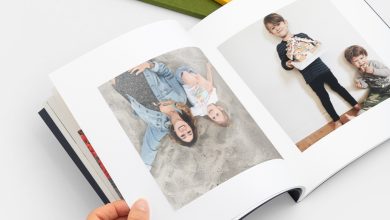Best Santoku Knife!

kitchen knife in Japanese
A particular kind of knife used in food preparation is called a best santoku knife . These knives come in a wide range of styles and are frequently forged using conventional Japanese blacksmithing methods. The same type of steel used to produce Japanese swords called again, or stainless steel, may be used to make knives. Most knives are referred to by the variant -bch in compound words (due to rendaku), although they can also go by other names. Japanese knife designs may be divided into four broad categories: Western vs. Japanese handles, single vs. double bevel blades, stainless vs. carbon steel, and construction.
Handles
Western handles have a complete or partial tang best santoku knife and a bolster. Compared to other Japanese handles, these handles have a lower volume and surface area yet are frequently heavier. The non-porous scale materials are frequently synthetic or wood that has been resin-cured. Western-style handles offer a more handle-heavy balance and a tighter hold to the blade, which is preferred by chefs. This makes it possible to reduce more weight.
Japanese handles, on the other hand, are frequently fashioned of ho wood that has been friction-fitted to a concealed tang after being burnt in. The handle-blade intersection is covered with a buffalo horn bolster, which keeps it from splitting. Installation and replacement are made simple as a result. Because of its tiny grain and pores, the wood is less prone to split and will keep its hold. Even though they are heavier and frequently burned on the exterior to increase grip and water resistance, more attractive woods like ebony, yew, cherry, or chestnut can also be used to make handles. These ornamental woods will break more quickly when exposed to moisture if they are not properly cured or maintained. Pak, or Pokka wood, is a laminated wood that is frequently used in cheaper knives.
The most typical form has a little taper toward the blade and is an octagon. The d shape, which is an oval handle with a ridge running along the same side as the edge bevel, is another typical şişli escort design (right side of handle for a right handed knife). A chef would frequently choose a Japanese handle if they want their knife to have more weight in the blade, to be lighter overall, to have a bigger handle, or if they want to be able to repair their knife handle more readily.
Blades
The double bevel of conventional Western best santoku knife tapers symmetrically to the cutting edge on either side. Knives with only one bevel, which commonly tapers to the right, can be trickier to use and call for greater skill. During the Meiji period in the late 19th century, Japan acquired French and German cutlery concepts and incorporated them into Japanese cutting skills and culture. Compared to their European equivalents, Japanese knives are frequently flatter.
Katsuobushi-Kiri
This knife is used to slice bonito (katsuobushi) best santoku knife thin scales so that it may be utilized as an ingredient in many different recipes. The blade is rather short, measuring around 65mm, and looks like a wood carving knife.
Guyot
(beef knife) This knife is referred to as the professional best santoku knife knife used in Western cuisine. It is applied while chopping or thrust-cutting vegetables close to the heel of the knife. To make precise cuts at the tip of the knife and to rock-chop more rigid produce, use the guyot.
Santoku
The Santoku also known as the Bunka cabochon (culture knife), is a versatile knife that is typically used for vegetables and fish. These knives often have a flatter profile than gyuto knives and a blunter tip. The wrist is in a more natural posture since they are flatter, and the shoulder doesn’t have to be elevated as high. These knives can cut with less space needed. In the majority of Japanese homes, these knives are the most common. The typical size is between 165 and 180 mm.
Makira
(vegetable knife) The square tip of the knife makes it seem more solid and secure than the santoku or gyuto’s pointed tip, enabling it to cut thick goods at the tip. The edge of this knife is flat. Some nakiri variants feature a blade profile that is somewhat angled in the direction of the handle. By forcing the hand to tilt up slightly and improving the grip, one is able to cut with greater force from their forearm. The typical size is between 165 and 180 mm.
Petty
This is a tiny knife that is frequently used with the gyuto for smaller vegetables or while paring. The standard sizes span the 120 mm to 180 mm range.
Sujihiki: (muscular cutter) These are long knives that are typically used to make draw cuts in flesh. The standard sizes include the range of 240 mm to 300 mm.
Hankou
This butchering tool is used to separate hanging flesh from the bone while slaughtering cattle. The size is often 150 mm.
Chukabocho: The chukabocho, sometimes referred to as the Chinese chef knife, has a small handle, a flat profile, and a tall blade that is utilized for mechanical advantage. The blade is often thicker behind the edge to cut bone sometimes other heavier substances more effectively.
Traditional Japanese knives
Traditional Japanese knives have only one bevel. They have an emote (a right-edge), a hander’s shinobi (where the front bevel meets the flat of the blade face), and Murasaki (a hollow backside that releases food). Compared to Japanese double bevels, these knives often have a somewhat thicker spine and body, but they are thinner immediately beneath the edge. The product must bend farther because to the thickness of the blade, despite the fact that they leave a better surface quality. These knives were initially adapted from Chinese double bevel knives and are now a staple of established traditional Japanese cuisine. By exerting pressure on the shinobi and the edge, they are sharpened along the single bevel. The initial sharpening is called Honbazuke.
Construction
Blades made of monotal are often thinner and more difficult to sharpen than laminated blades. There are 3 types of monostable blades:
Zinke was destroyed.
Holyoke—forged from carbon steel and hardened differently;
from a billet without undergoing differential hardening.
There are three sorts of laminated blades: awaze, which refers to mixed steel, Kazuma, which describes the misty appearance of iron after sharpening, and hon-kabuki (higher quality kabuki). The jjigae and the hexane, two pieces of steel, are used to form a laminated blade. The terms “jugate” and “hexane” allude to hard cutting steel and soft cladding, respectively. Both frequently have carbon or stainless steel in them. Laminated blades are robust with the high carbon steel and corrosion-resistant with the stainless steel thanks to this metal combination. Due to production challenges, structures like stainless cladding over a carbon steel core are less frequent. The jjigaes makes it simpler to sharpen and shockproof the knife. It also strengthens the Hagan without strengthening the entire blade.
production
Sakai
Samurai were forbidden from carrying swords during the Meiji Restoration in 1868 in an effort to modernize Japan. Swords and knives are so
Use and design
Japanese knives, in contrast to western blades, are frequently just single ground, indicating that only one side retains the cutting edge. As seen in the illustration, certain Japanese knives have an angle on both sides, whereas others only have an angle on one side of the blade. A single-angled blade was once thought to cut better and cleanly, however it required more expertise to handle than a blade with a double-beveled edge. Since most users hold the knife in their right hand, the right side of the blade is often inclined. Models for left-handed people are uncommon and need to be properly ordered and constructed.
Western-style, double-beveled knives have been available since the conclusion of World War II.
The majority of Japanese chefs working professionally possess their own set of knives. The user may “rest” a carbon-steel knife for a day after sharpening it in the evening after use to recover its patina and get rid of any metallic flavor or odor that would otherwise contaminate the meal. For this reason, some cooks decide to keep two sets of knives.






